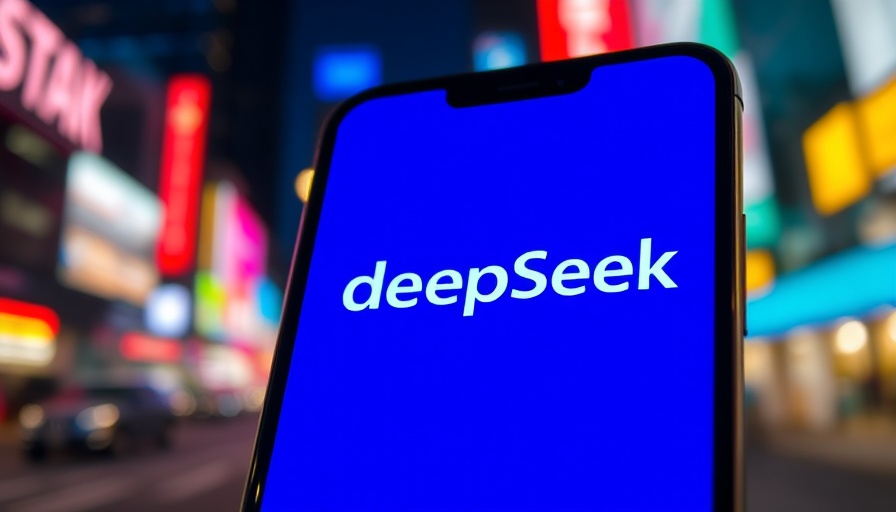
DeepSeek's Innovation: A Response to Global AI Regulations
In the realm of artificial intelligence, the race for innovation and leadership is intensifying, particularly in light of tightening global regulations. Amidst this landscape, China's DeepSeek is making headlines with its new AI model, R2, designed to challenge the dominance of established Western competitors while capitalizing on increasing support from the Chinese government. This state-backed initiative highlights a convergence of technology, geopolitics, and innovation.
China's AI Ambitions: A Shift in Strategy
With aspirations to lead the world in artificial intelligence by 2030, China has committed substantial resources to develop technologies that can perform at par with Western innovations. DeepSeek has emerged as a key player, showcasing that powerful AI models can be developed cost-effectively. The company’s success reveals a broader trend where Chinese firms leverage accessible technology to enhance their positions in the global market. According to analysts, this could act as a catalyst, encouraging similar firms worldwide to reshape their AI development strategies.
R2: A Game-Changer in AI Development
The upcoming launch of DeepSeek’s R2 model, previously set for May, is expected to accelerate the company's growth trajectory. By enhancing coding capabilities and supporting multiple languages, R2 positions DeepSeek to outshine competitors like OpenAI that traditionally held the lead in AI innovations. Experts predict that the model's affordability—estimated to be 20 to 40 times cheaper than its Western counterparts—will force established firms to rethink their pricing structures.
The Political Landscape: Nurturing Domestic Talent
China’s government is not just a passive observer in this AI race. It actively supports startups like DeepSeek, integrating its innovative models into state-owned enterprises and local governments. This collaboration could fuel a cycle where DeepSeek’s innovations promote further investments in AI by Chinese firms, potentially narrowing the technological gap with the U.S. as restrictions on advanced semiconductors tighten. Such dynamics may compel Western companies like Nvidia to readjust their strategies, particularly in pricing to retain competitiveness against DeepSeek.
DeepSeek's Challenges: Balancing Innovation and Control
While DeepSeek's rise signifies great potential for disrupting the AI landscape, it also raises questions regarding control and censorship in China. As the Communist Party aims to steer technology towards nationalistic goals, its role in moderating the power and influence of startups like DeepSeek could become more pronounced. The tension between fostering innovation and maintaining political control remains a delicate balance for the Chinese leadership.
Future Implications: What Lies Ahead?
The upcoming months are critical for DeepSeek and the broader AI sector in China. As it aims to introduce R2 to the market, the company's trajectory will likely influence not only domestic competitors but also international sentiments about China's capabilities in AI. This could also lead to increased scrutiny of China's approach to technology on the global stage, making it imperative for stakeholders to watch how these advancements unfold. As a key player in the evolving tech landscape, DeepSeek’s actions will inevitably play a significant role in shaping the future of artificial intelligence globally.
In conclusion, as AI regulations become more stringent worldwide, the strategies adopted by emerging leaders like DeepSeek will determine not just the competitive landscape, but also the balance of technological power in the international arena. Capturing the essence of innovation, affordability, and collaboration, DeepSeek embodies the potential for a new chapter in the story of artificial intelligence.
For those keen on following the rapid advancements in AI and their implications, staying updated on DeepSeek and its competitive strategies will be essential.
 Add Row
Add Row  Add
Add 


 Add Row
Add Row  Add
Add 

Write A Comment